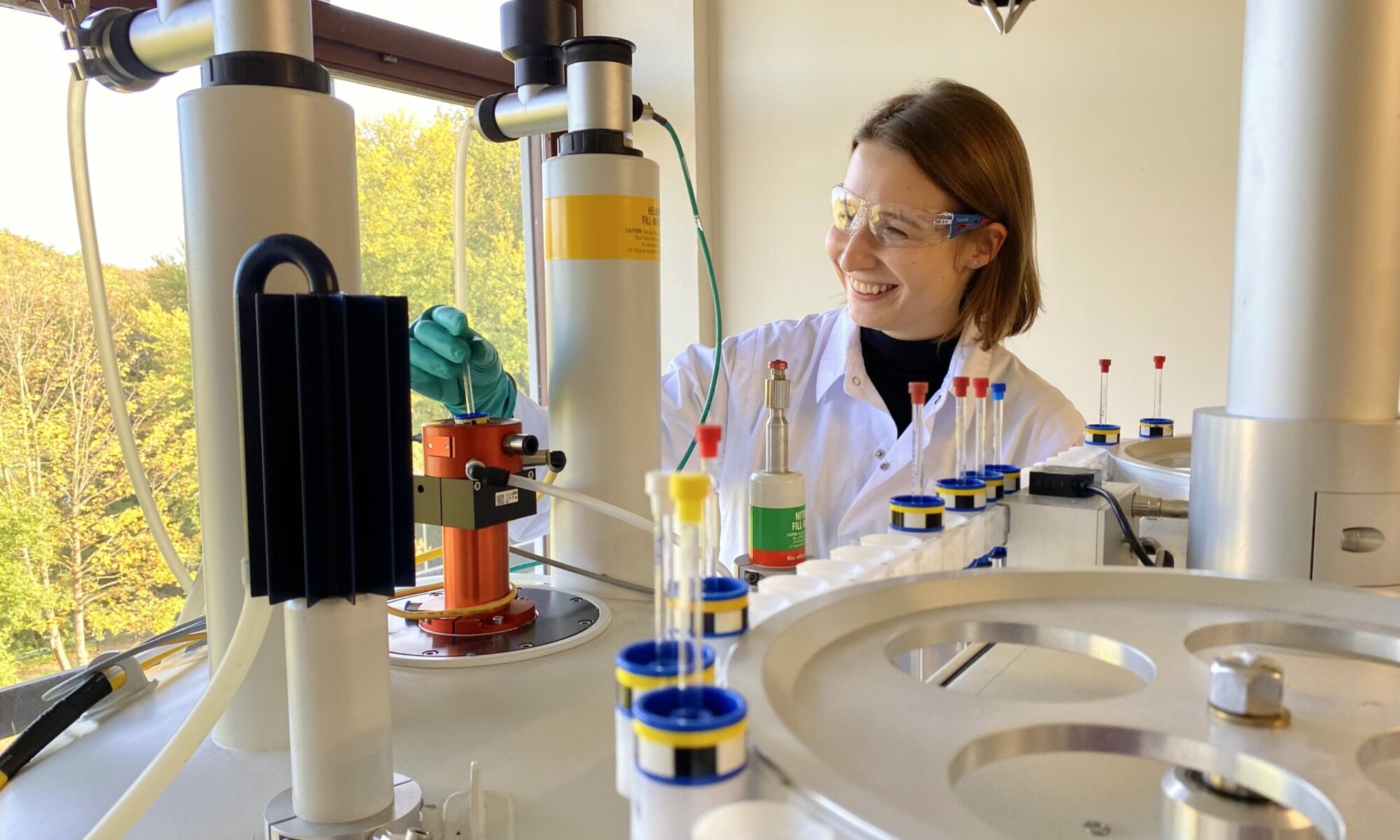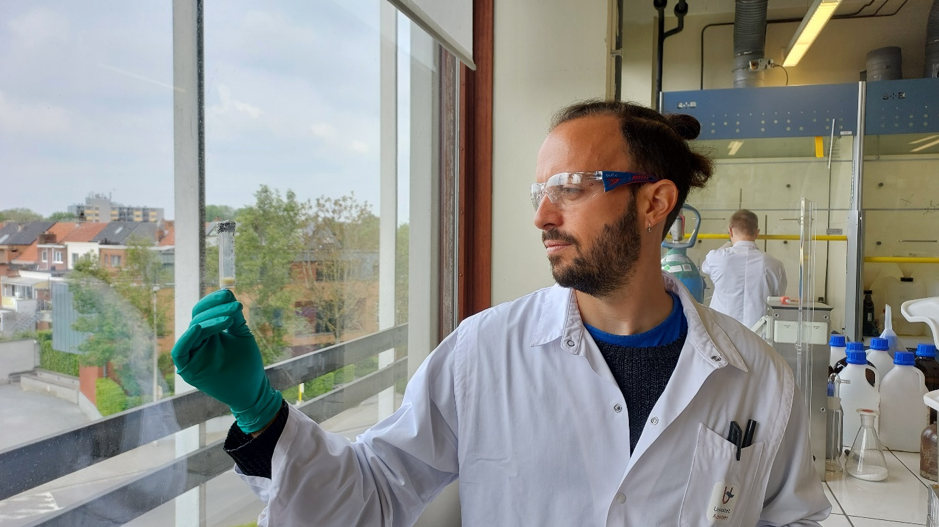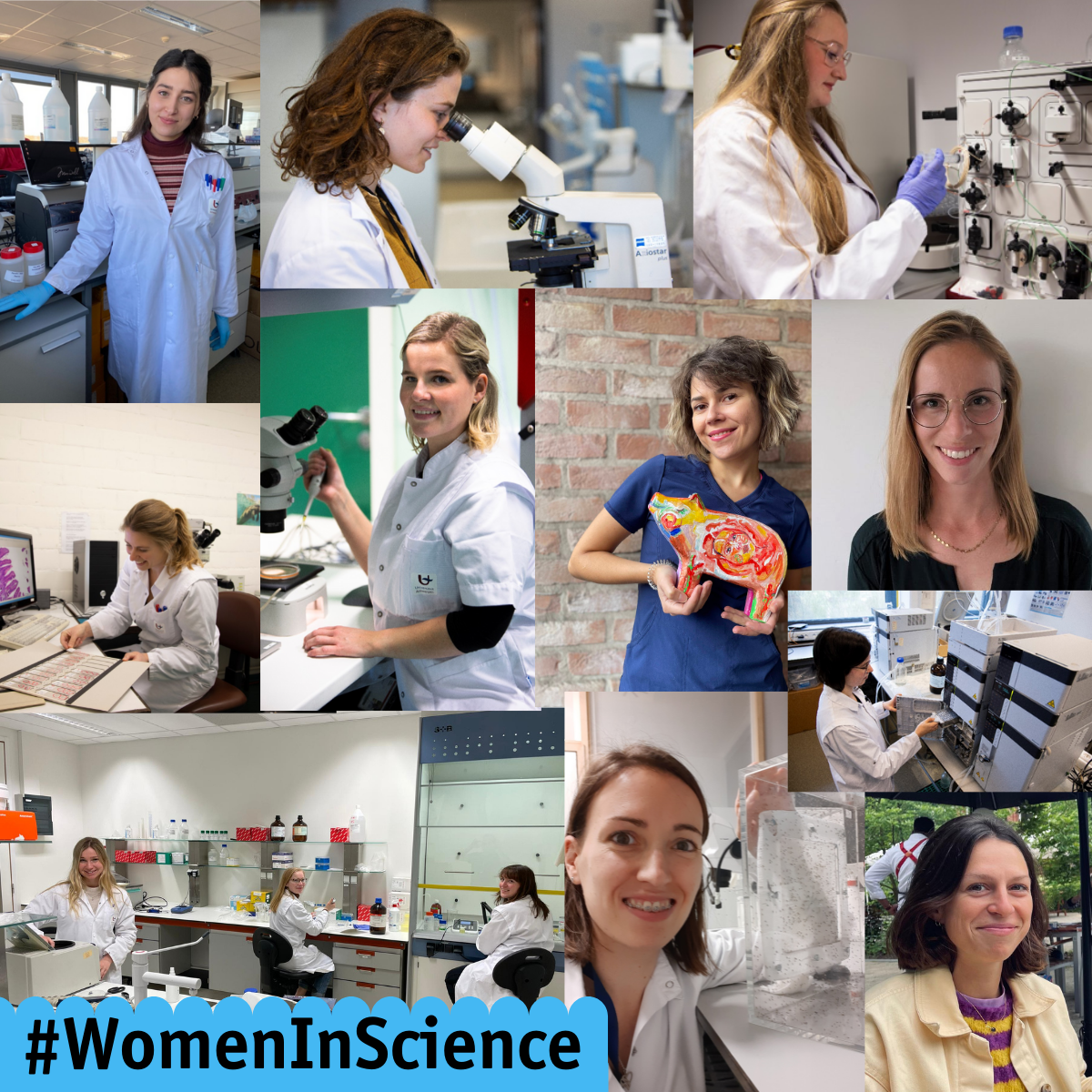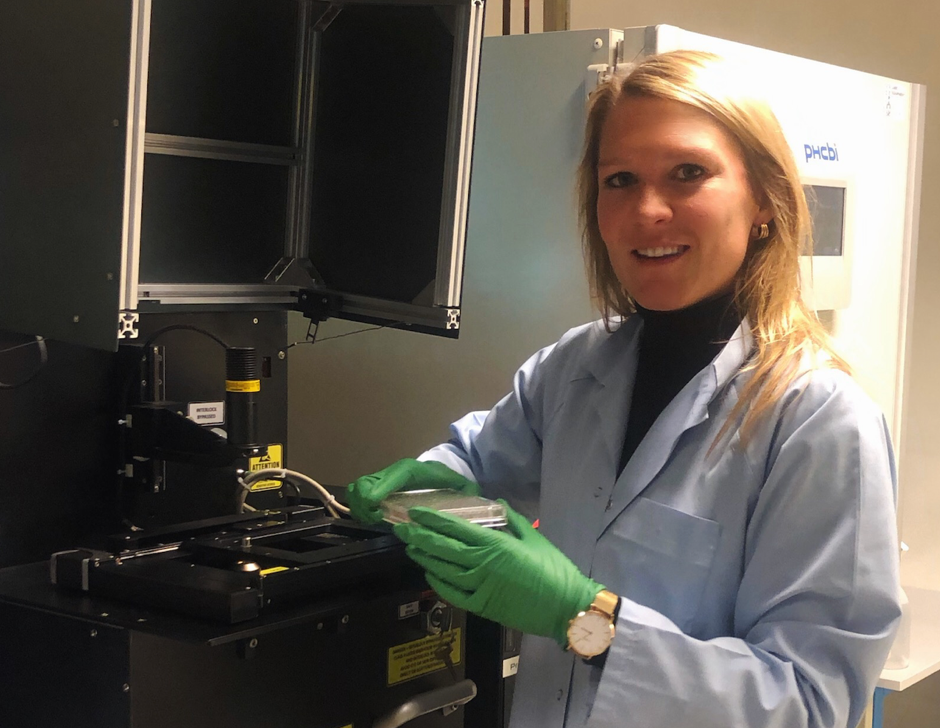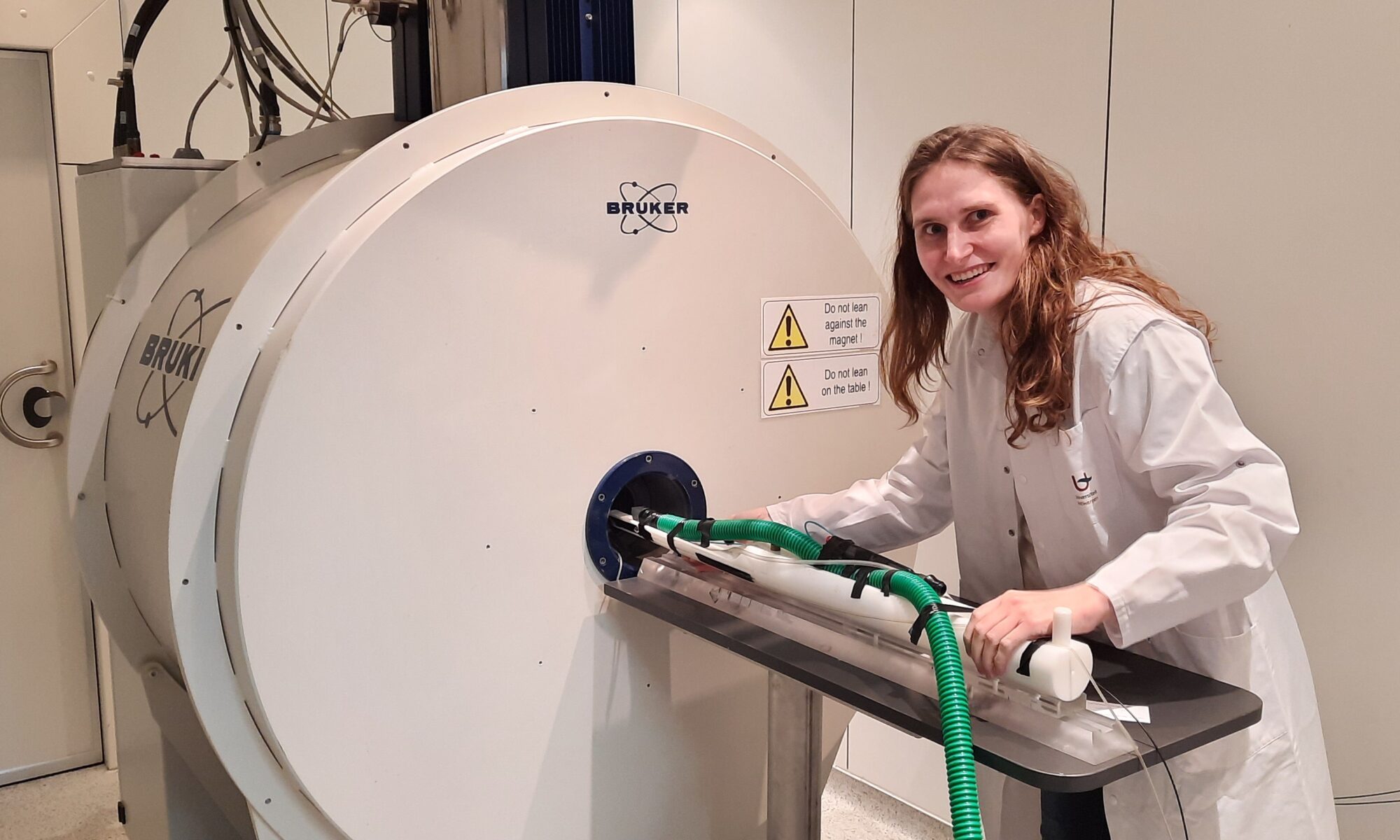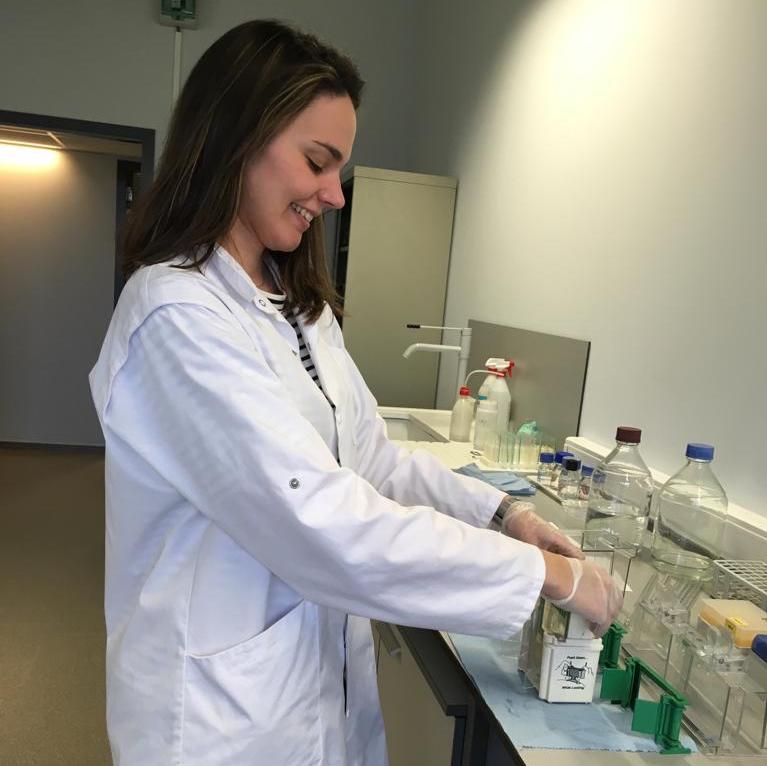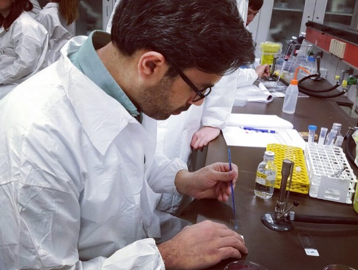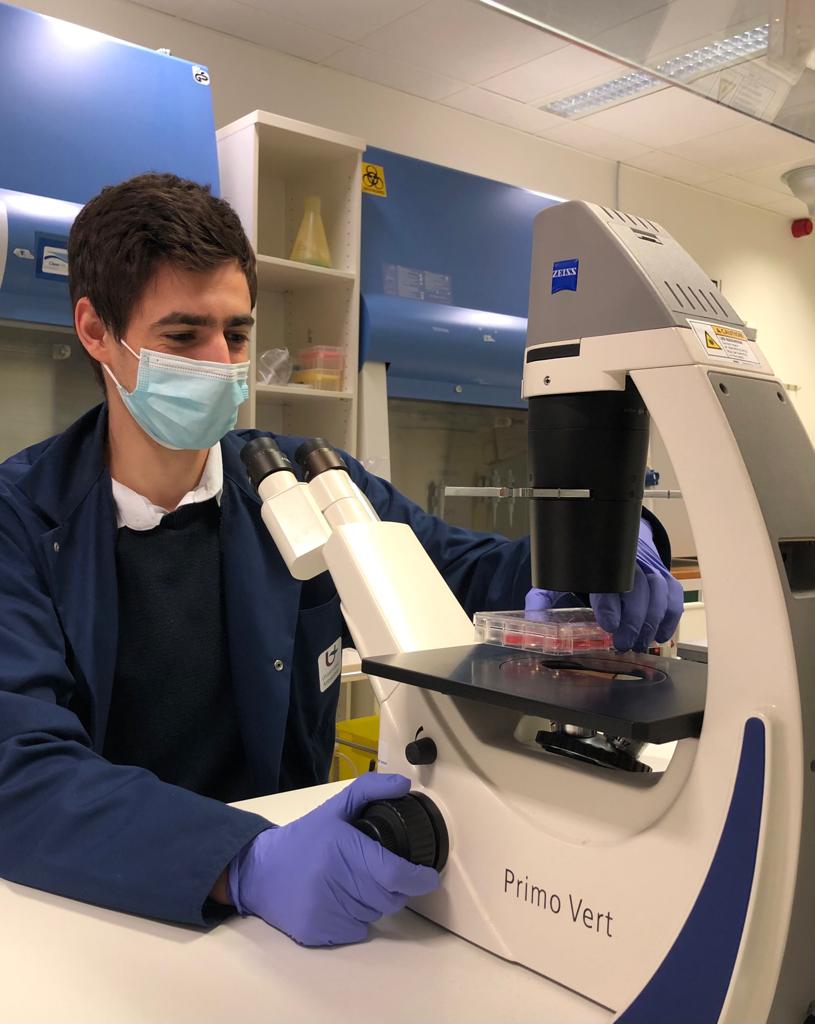I’m Greta Klejborowska and I’m a Postdoctoral Research Fellow in the Medicinal Chemistry Research Group, led by Prof. Koen Augustyns. My research is focused on the development of novel ferroptosis inhibitors. But what exactly is ferroptosis and why is it important to block or inhibit it?
Filter
I am Auchi Inalegwu and during the past 5 years I have been working on obtaining my PhD in Biomedical Sciences. My research has focused on using different cellular and molecular techniques to study breast cancer cells, with the goal of identifying biomarkers for radiation resistance.
I’m Lorenzo Cianni and my research focuses on targeting autophagy in cardiovascular and metabolic diseases. I was awarded a Marie Skłodowska-Curie Actions (MSCA) Postdoctoral grant for this specific project. I’ll be working with Prof. Pieter Van Der Veken and Prof. Wim Martinet to tackle tissue-specific induction of autophagy as an innovative therapeutic strategy for cardiovascular and metabolic diseases.
In order to achieve gender equality and the empowerment of women and girls, the United Nations General Assembly declared 11 February as the International Day of Women and Girls in Science in 2015. We’d like to celebrate this special day by introducing you to some of our excellent women researchers!
I’m Gaëlle Houthaeve and for the past 5 years I have been doing an interdisciplinary PhD with Prof. Winnok De Vos in the Laboratory of Cell Biology and Histology and Prof. Kevin Braeckmans. My PhD research has focused on vapor nanobubble photoporation, which uses laser light (“photo”) to generate vapor nanobubbles, which are able to porate the plasma membrane of cells (“poration”).
Songbirds are present all around us in our daily lives, but did you know that besides their beautiful song each morning they can also teach us something about neuroplasticity? My name is Jasmien Orije, and during my PhD at the Bio-Imaging Lab, under supervision of Professors Annemie Van Der Linden and Marleen Verhoye, I had the opportunity to work with this remarkable animal model for neuroplasticity.
During her PhD research in Biomedical Sciences, Emilie Logie aimed to find new treatment options to overcome therapy resistance in the blood cancer multiple myeloma. Together with Professor Wim Vanden Berghe, her supervisor at the Proteinchemistry, Proteomics and Epigenetic Signalling (PPES) lab, Emilie used and combined different molecular techniques to identify new ways for treating therapy-resistant multiple myeloma cancers.
Bahaa Shaqour is a PhD student from Palestine and he is working with Prof. Paul Cos at the Laboratory for Microbiology, Parasitology and Hygiene (LMPH). He is exploring the capabilities of 3D printing technologies to produce novel medication delivery systems. 3D printing, also known as additive manufacturing, is a method of creating a three dimensional object layer-by-layer using a computer generated design.
Bethan Burnside recently started her PhD in Biomedical Sciences with Professor Frank Kooy in the Cognitive Genetics Lab at the UAntwerp Center of Medical Genetics. She aims to explore the epigenetics of ADHD in adult women. Until recently, attention deficit hyperactivity disorder (ADHD) was thought of as a neurodevelopmental condition that occurs in young boys. In fact, even Bethan believed this to be the case – until she was diagnosed with ADHD herself at the age of 25! Unfortunately, due to these misconceptions, ADHD in girls and women is often diagnosed too late or misdiagnosed as something else.
New research findings by Prof. Vincent Timmerman’s group has revealed common hallmarks in motor neurons of patients with different subtypes of Charcot-Marie-Tooth disease (CMT) type 2, including impaired axonal transport and mitochondrial dysfunction. Targeting these underlying disease mechanisms could pave the way for treatments that can help a larger group of CMT patients.
Epilepsy is one of the most common chronic neurological disorders, affecting more than 65 million people worldwide. I’m Dr. Daniele Bertoglio and I recently obtained my second PhD at UAntwerp under supervision of Prof. Annemie Van Der Linden, head of the Bio-Imaging Lab. During my PhD I used various imaging techniques to gain a better understanding of epilepsy, a neurological disorder in which brain activity becomes abnormal, causing seizures.
I’m Astrid Van den Branden and I’m doing the Master of Biomedical Sciences at UAntwerp. I am enrolled in the UAntwerp Honours College program. I had the opportunity to participate in this prestigious program after my first Bachelor year.

